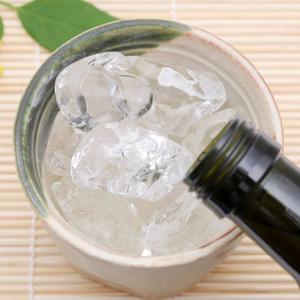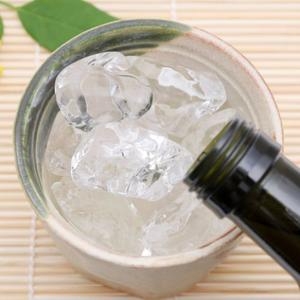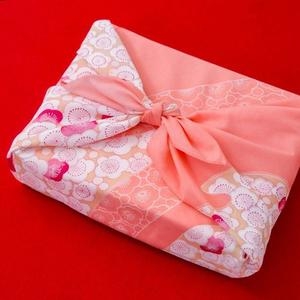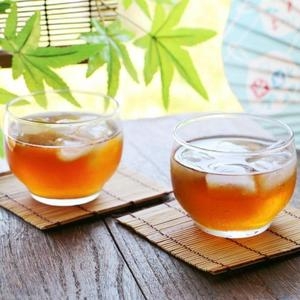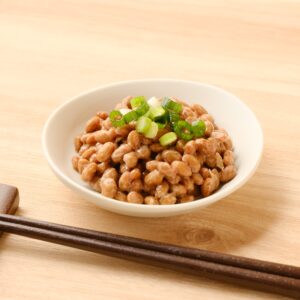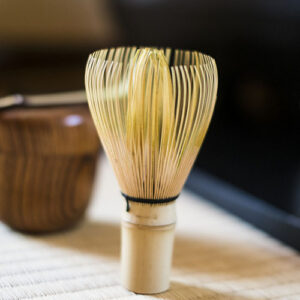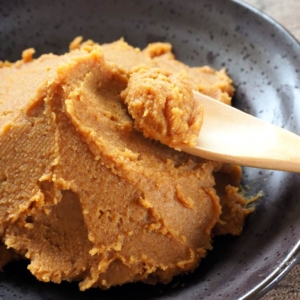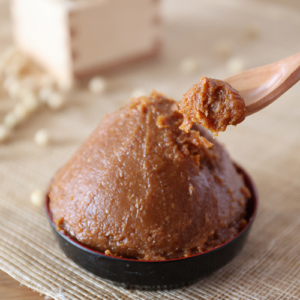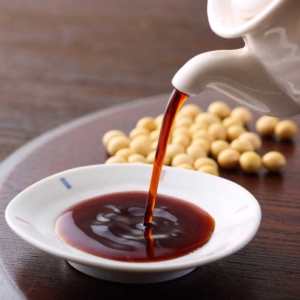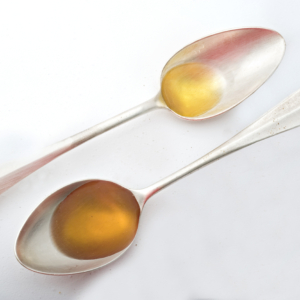Most non-Japanese would say that sake is the only traditional alcoholic beverage of Japan. But there are a lot of Japanese alcoholic drinks to taste and explore. Shochu is one of them.
If you enjoy tasting different kinds of alcoholic beverages, you should try shochu during your next visit to Japan.
So, without further ado, let’s dive in and get to know Japanese shochu.
Contents List
- What is Shochu?
- Shochu, Sake and Soju
- Shochu vs Sake
- Shochu vs Soju
- Popular types of Shochu
- Awamori
- Rice Shochu
- Wheat Shochu
- Sweet Potato Shochu
- Brown Sugar Shochu
- How to Enjoy Shochu
- On The Rocks
- Dilute With Water
- Dilute With Soda
- Dilute With Warm Water
- Straight
- Shochu Cocktail Recipe: Shochu Mojito
- Frequently Asked Questions
What Is Shochu?
Shochu is Japan’s traditional distilled spirit that is usually made from grains or Japanese sweet potato. Shochu has a clear looking appearance and a quite strong taste. The taste can vary depending on what ingredients the shochu is made with and there are a lot of ways to enjoy it.
Shochu generally contains 20-25% alcohol but some variants may contain up to 40%.
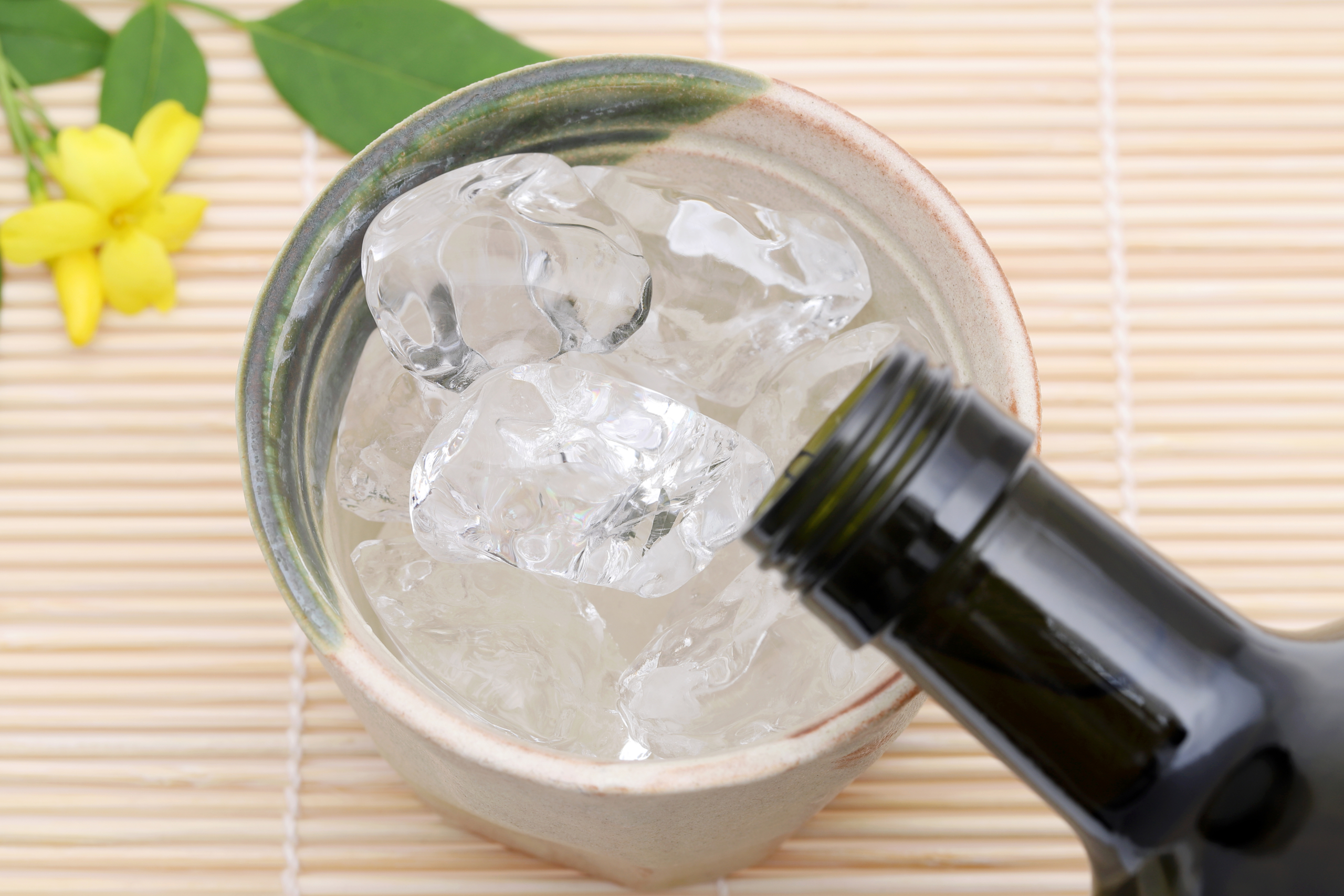
Shochu is commonly produced in the Southern part of Japan. Although right now it is not impossible to find shochu distilleries in the Northern part of Japan such as Hokkaido and Tohoku region, the majority of shochu distilleries in Japan are located in the Southern part specifically in Kyushu region.
Though it is not as famous outside Japan, in Japan shochu is a very popular drink. Shochu is loved by many Japanese that it has outsold sake for the last decade in Japan.
If you want to try shochu with the best quality, honkaku shochu is always a great choice. Honkaku shochu or authentic shochu is a type of shochu that is made using the traditional distillation method that has existed for centuries in Japan. You can identify honkaku shochu by looking at the bottle label, usually written in kanji 本格焼酎 (read: honkaku shochu). Another type of shochu that also has a similar quality to honkaku shochu is awamori 泡盛 (sometimes also called ryukyu awamori 琉球泡盛). They are both classified as otsu-rui shochu or otsu-class shochu, a premium shochu that is made with a single distillation method. Due to this method, the aroma of ingredients in otsu-rui shochu will be sealed in and the shochu will have a much better taste.
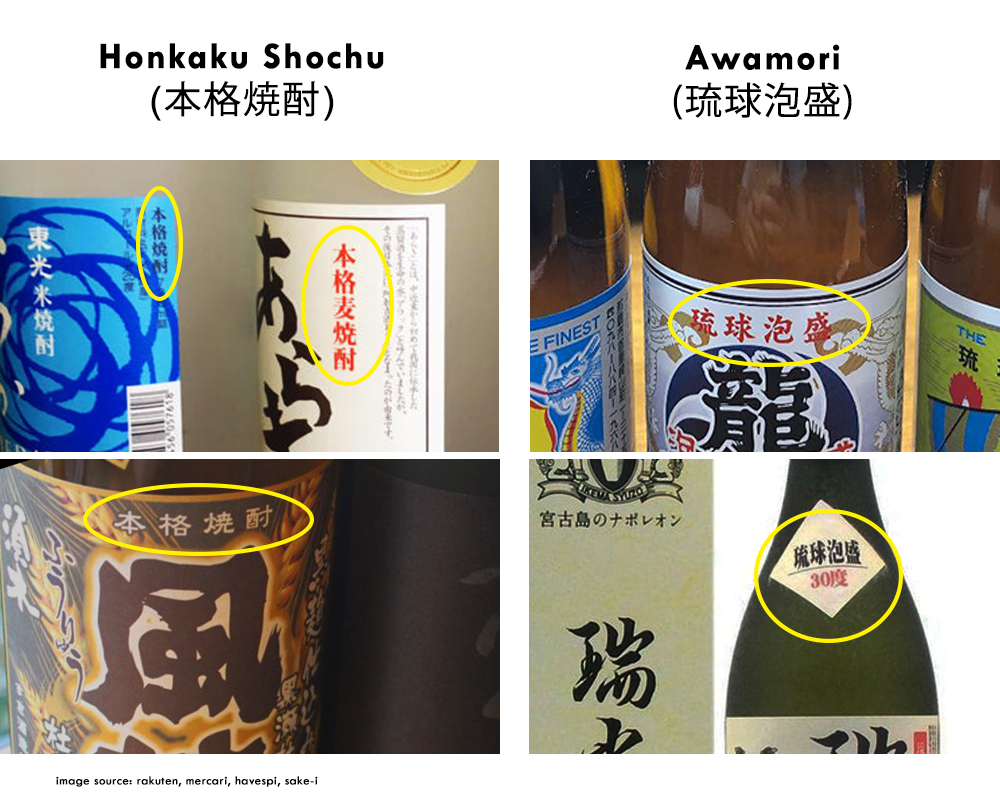
There is also a type of shochu that has a lower quality. It’s called ko-rui shochu or ko-class shochu. This shochu went through continuous distillations. Compared to honkaku and awamori, ko-class shochu has a blander taste and is mass produced so the price is cheaper. Since it has less odor and flavor, ko-class shochu is great for making cocktails. You can identify ko-class shochu by looking at the shochu bottle. Ko-class shochu bottle clearly state the shochu type in kanji 焼酎甲類 (read: shochu korui).
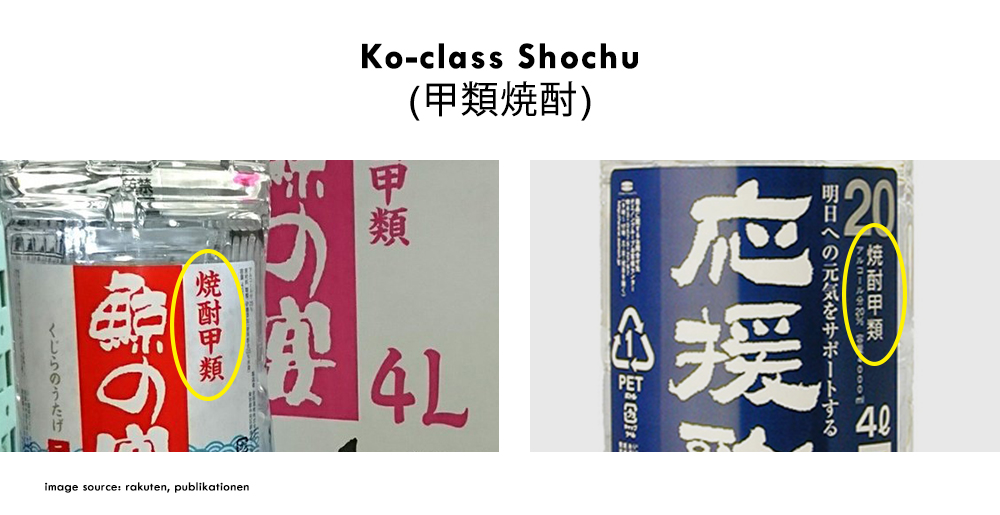
Shochu, Sake, and Soju
Shochu vs Sake
Shochu and sake are two very different things. The most distinctive difference between the two is the making process. Sake is brewed while shochu is distilled. It’s as simple as that. Sake is brewed by fermenting rice while shochu is distilled and can be made from various ingredients like buckwheat, barley, sweet potato, or even rice.
Based on the distilling process, shochu is rather similar to vodka.
Shochu vs Soju
In Japan, sometimes soju is also called Korean shochu. Due to their similarities it is pretty tricky to find the difference between the two. But, when we look at the ingredient, we might see some differences. The most common ingredient for soju is rice, tapioca, corn, and sweet potato. Though some are also common shochu ingredients, corn or tapioca is rarely used to make shochu.
Popular Types of Shochu
You won’t know whether you like shochu or not just by drinking one type of shochu. Like all alcoholic beverages, shochu has a lot of varieties that’s worth exploring. Here are some of the most popular types of Japanese shochu.
Awamori
Awamori is native to Okinawa prefecture and is produced with only Thai rice as the main ingredient. It is very common to use black koji to make this shochu. Because Thai rice has a less sticky texture, it is very easy for koji to grow. And this will also give awamori shochu the special taste and fragrance that it has. In Japan, awamori is considered as a premium shochu. Older awamori will have a prominent vanilla aroma, almost like whiskey. Awamori that has matured for three years is called Kusu.
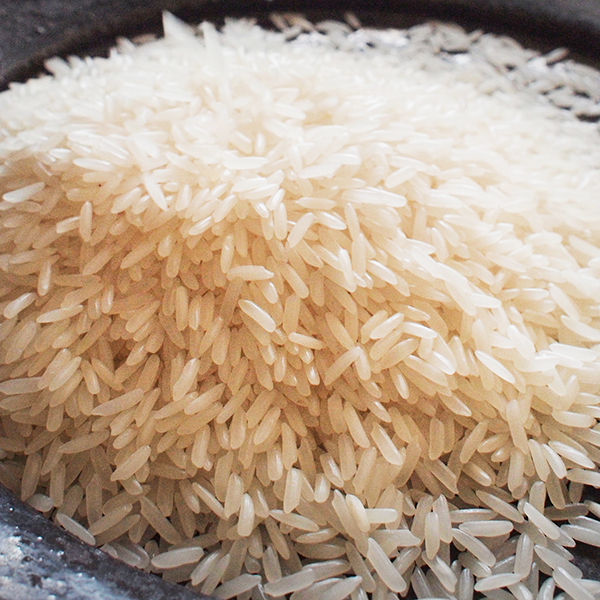
Rice Shochu
Rice shochu has the umami and sweetness of rice. To preserve this taste, during shochu production rice is milled and polished. The rice has a polishing rate of 85%-90%. Different from awamori shochu, rice shochu uses Japanese rice as a main ingredient. This type of shochu is produced all over Japan.
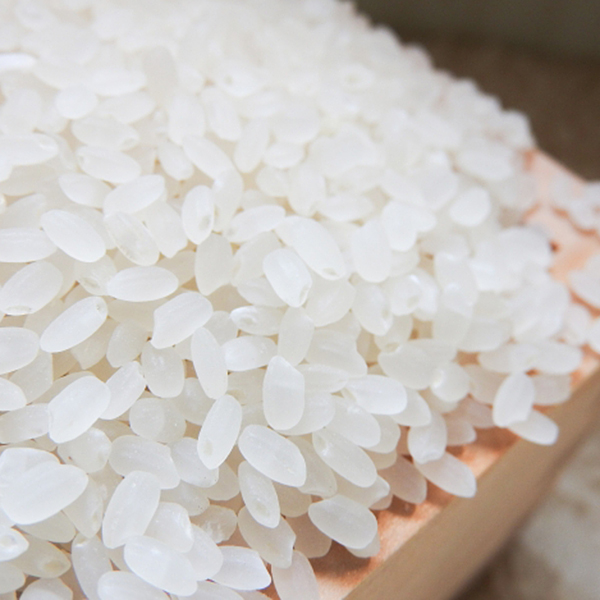
Wheat Shochu
For someone who drinks shochu for the first time, wheat shochu is highly recommended. Due to its fruity and fragrant aroma, this shochu is easier to drink. Lately it is also very popular to mature wheat shochu inside an oak barrel.

Sweet Potato Shochu
Slightly sweet aroma and rich taste are the unique characteristics of sweet potato shochu. Depending on the water and climate where the sweet potato is derived, the taste of sweet potato shochu will vary differently. For example, among all sweet potato shochu in the Kagoshima area, sweet potato shochu from the western part has a stronger taste, the eastern part has a refreshing taste, while the central part has a sharper taste.
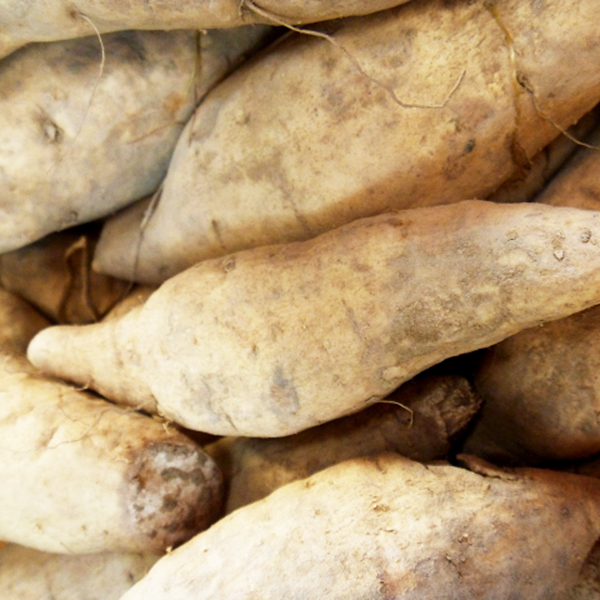
Brown Sugar Shochu
Brown sugar shochu is a specialty drink from Amami islands. Some say that brown sugar shochu has a similar aroma as rum. According to the Liquor Tax Act, Amami islands is the only place that is allowed to produce brown sugar shochu. So it can be considered as a special delicacy that you should try if you ever visit Amami islands.
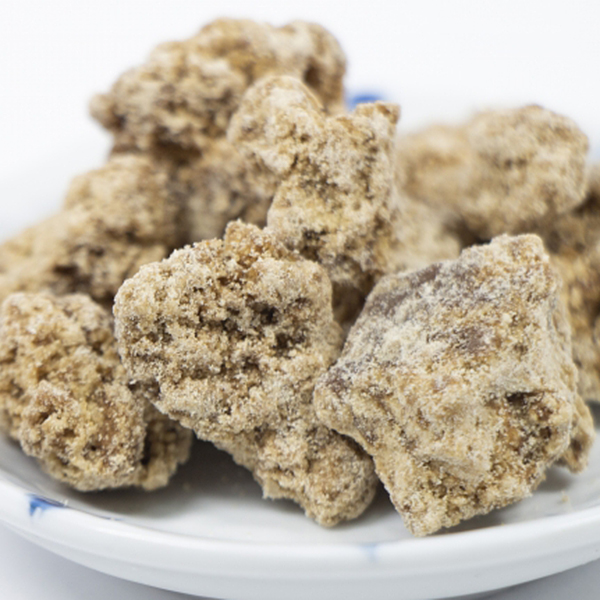
How to Enjoy Shochu
One of the charms of shochu is that it can be enjoyed in a lot of ways. Here are the most common ways to enjoy shochu.
Straight
This drinking method is recommended for higher quality shochu like honkaku shochu and awamori. It is best not to add anything to enjoy the taste of premium shochu.
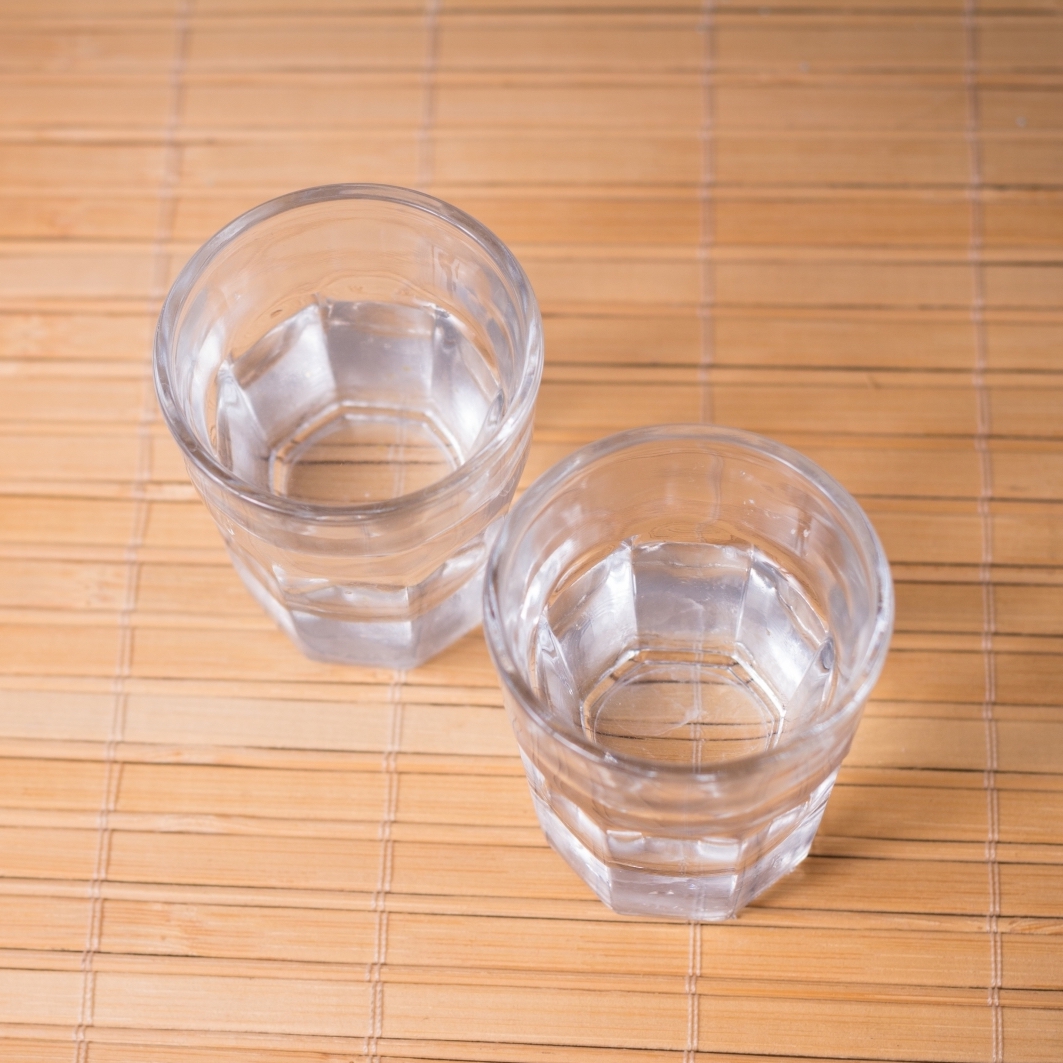
On The Rocks
To enjoy shochu on the rocks, Add ice to a glass, make sure to wait about ten minutes until the glass has a colder temperature. After that, pour in the shochu. To make it more refreshing you can also add a little bit of lemon water or cut cucumber.
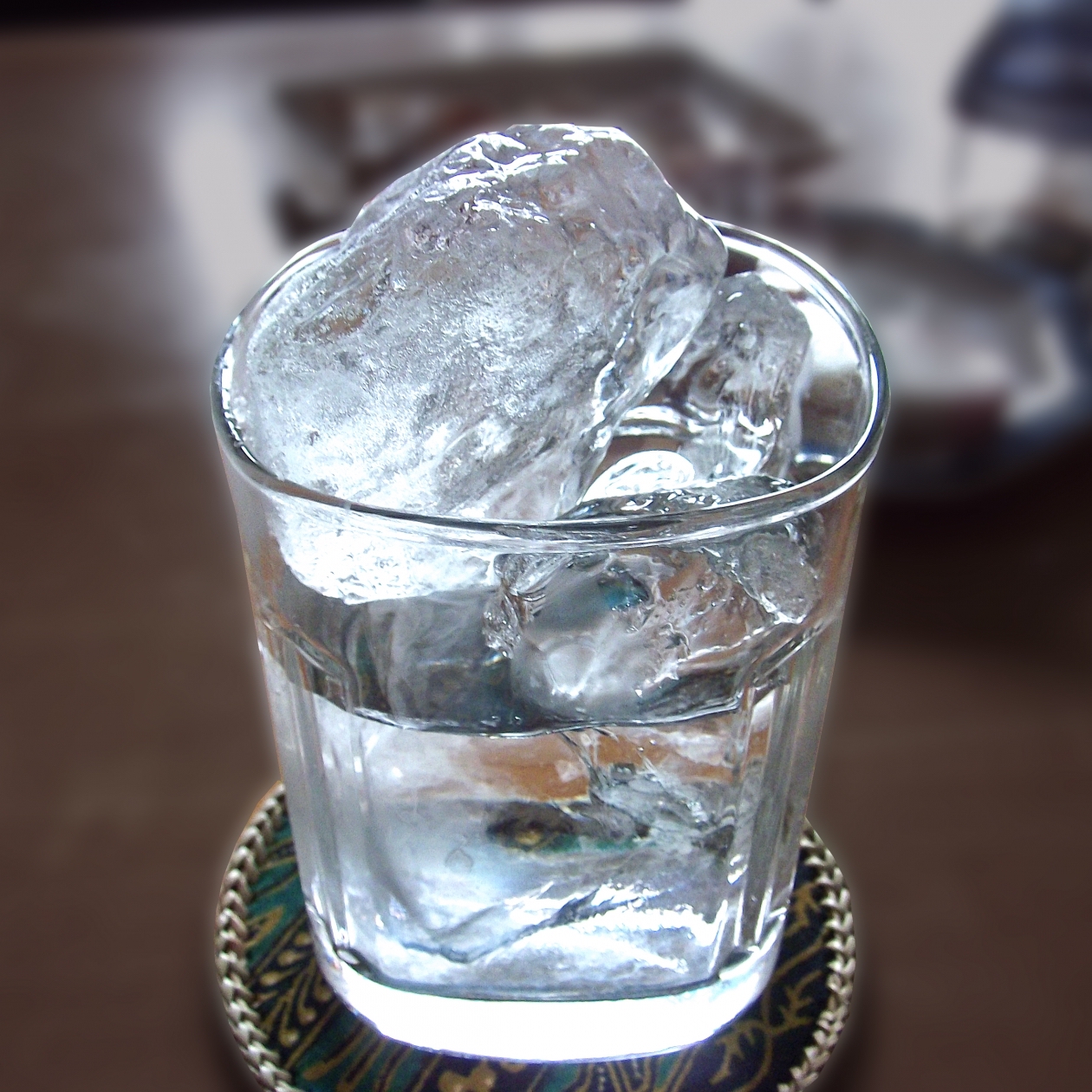
Dilute With Water
Shochu can be diluted with water to make the taste a bit softer and easier to drink. First, add big chunks of ice to a glass, pour in the shochu, and pour water to your liking.
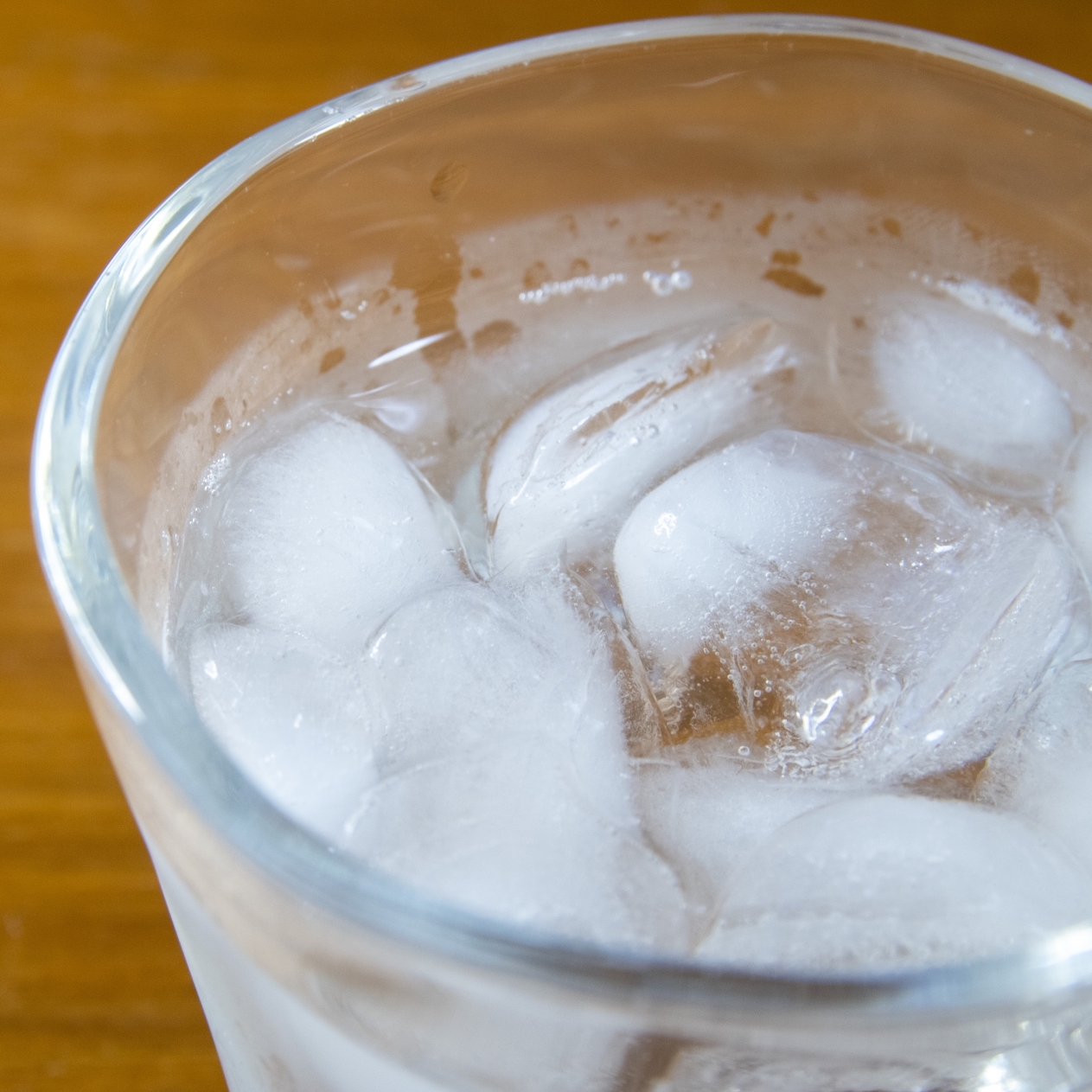
Dilute With Soda
Shochu mixed with soda is the perfect combination for a hot day. Add shochu to a cold glass that is filled with ice, then pour in the soda. Lastly, add a slice of citrus fruits like lemon or lime to enhance the taste.
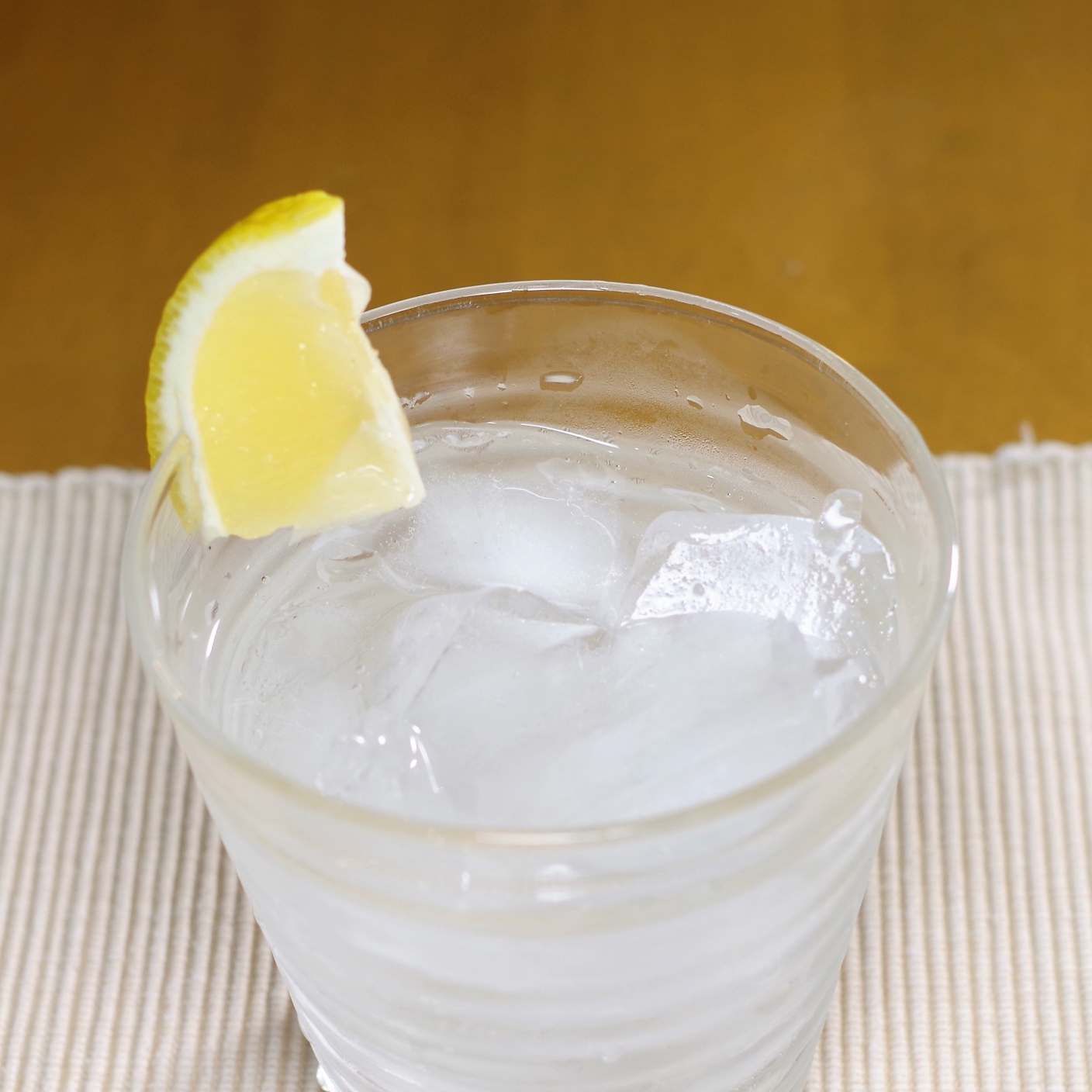
Dilute With Warm Water
To dilute shochu with warm water, make sure to add warm water first. That way, when you pour in the shochu, the aroma will be more prominent as it mixes with the warm water. In Miyazaki prefecture, it is common to use a 6:4 scale (60% shochu 40% warm water) or 7:3 scale (70% shochu 30% warm water).
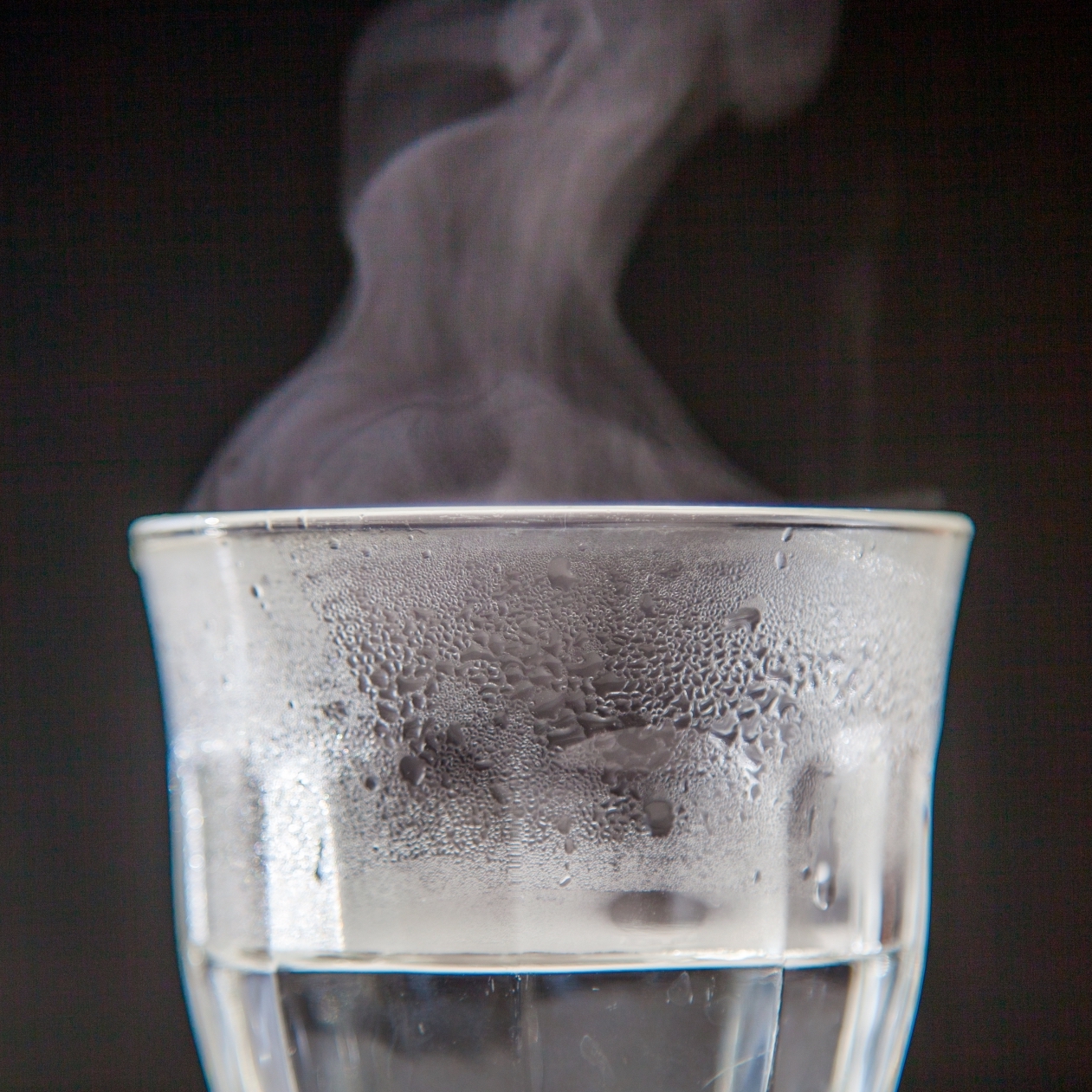
Shochu Cocktail Recipe
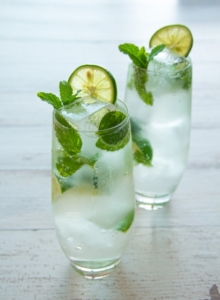
Shochu Mojito
Ingredients
- 300 ml Soda Water
- 50 ml Shochu
- 5 Leaves Mint
- 1 Lime
- As needed Ice
- As needed Salt
Instructions
- Slice 2 thin circle of lime for decoration and cut the rest of the lime into wedges
- If you like strong minty flavor, you can cut the mint leaves into big pieces. This will bring out the mint taste.
- Mix ice, soda water, shochu, and all of the ingredients in a tumbler and mix well.
- Shochu Mojito is ready to drink.
Frequently Asked Questions
- What is the main difference between Otsu-class shochu and Ko-class Shochu?
- The main difference between the two categories is their distillation method. Otsu-class shochu went through a single distillation, giving it a better taste and aroma. On the other hand, ko-class shochu went through continuous distillations. This causes the shochu to have less flavor. Due to this fact, ko-class shochu is great for making cocktails.
- Where can I get shochu if I live outside Japan?
- Most distilleries ships their shochu abroad, so it is quite easy to order shochu online and get them shipped to your location.
- How do you keep and store shochu?
- Keep them away from direct sunlight and store them in a cool place.

